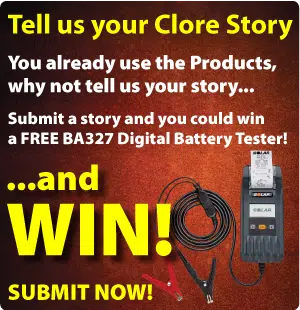AGM batteries continue to grow in terms of OE usage in new vehicle starting systems, driven largely by the increasing prevalence of Start-Stop Systems in today’s North American carpark. For many reasons, AGM and Start-Stop AGM batteries are best tailored to meet the specific needs of these systems, with their improved cycling capability and longer life in these demanding applications. We receive many calls and emails related to AGM batteries, usually asking what they’re all about, how are they better than traditional designs and how best to manage them when they are encountered. So, when we saw this piece in January, we knew we wanted to share it with our audience.
Here’s a great primer on the topic of AGM batteries by the team at UnderhoodService.com. They put together a FAQ related to AGM batteries as it relates to their use in GM applications, but honestly, it is applicable to virtually any AGM battery application.
That said, we do have a few points of clarification or correction we’d like to add:
- “Additionally, AGM batteries require less frequent charging in storage. While flooded batteries need a topping charge every six months if out of vehicle to prevent the buildup of sulfation, AGM batteries can sit in storage longer and are less susceptible to stratification before charging is required.”
Clore’s take: We would never suggest allowing a lead acid battery of any type to sit unused and unserviced for a length of six months or more. We suggest charging an unused lead acid battery every 90 days, whether it’s a vehicle battery, a jump starter battery or used in another application, flooded or AGM. In fact, we’d like to see a battery that’s going to sit for an extended period connected to a quality battery maintainer, like our PRO-LOGIX PL2140, to keep it in optimal condition and ready for use.
- “One of the main reasons is undercharging, and long-term discharge that can cause hydration failure. Overcharging and heat is also a common failure. Ensure your diagnostic charger is in the right mode for AGM. When charging/testing with a diagnostic charger (e.g., DCBS), be sure to correctly select the AGM battery type and enter the AGM battery’s CCA to prevent overcharging. When AGM batteries are overcharged, the electrolyte is consumed. Overcharging causes the temperature to rise, which can easily affect the electrolyte saturation level and make the separator less efficient, damaging the battery.”
Clore’s take: There is a lot here. We’ll address these topics one at a time. Undercharge/Discharge: as noted above, these batteries don’t want to sit in a discharge state for any length of time. Charge early, charge often. Keeping all lead acid batteries at or near full charge as much as possible is best when it comes to achieving the longest service life. Overcharging: Always use a quality “smart” charger with an AGM-specific charge setting when servicing these batteries. This will ensure that the batteries aren’t exposed to excessive voltage, which is damaging to battery health. Ideally, the charger will have temperature compensation, as our PRO-LOGIX chargers do, to ensure that temperature doesn’t adversely impact the charge routine.
These disclaimers aside, the FAQ has a lot of useful information that can help shops and technicians better manage their interactions with AGM batteries. It does a good job of identifying the differences between Flooded and AGM batteries and spells out many of the key considerations that are important when servicing AGMs. We strongly recommend checking it out here.





One Response
Great information